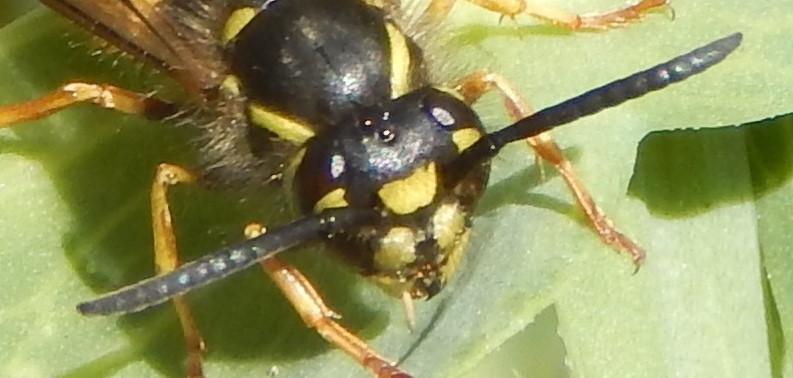
[357] Vespula vulgaris and Vespula germanica Wasps
Introduction
There are hundreds of thousands of species within the group Apocrita (but excluding bees and ants,) generally called wasps. Outside the world of zoology, the word wasp is restricted to the family Vespidae, generally just to two genera Vespula and Dolichovespula.
In the UK when we talk of wasps, we normally mean Vespula vulgaris or Vespula germanica (or another very close relative) and we don’t distinguish between the species, which are identical without very close inspection.
Technically, Vespula vulgaris is the Common Wasp and Vespula germanica is the German Wasp. For most of this blog I will call both species just Wasps indiscriminately.
In the USA they are called Yellowjackets.
Taxonomy
Kingdom – Animals
Phylum – Arthropods
Class – Insects
Order – Hymenoptera (Wasps, Bees and Ants)
Suborder – Apocrita
Family – Vespidae
Subfamily – Vespinae (Wasps and Hornets)
Genus – Vespula
Scientific Name – Vespula vulgaris and Vespula germanica
Other species of Vespula or Dolichovespula are similar.
Name
Wasp and the cognate Latin vespa both come from older roots, originally ‘waps.’ Vespula is just a diminutive of vespa. All the insects in the order Hymenoptera that are now known as wasps derive their name from insects in the genera Vespa and Vespula.
Dolicho-vespula comes by adding the Latinized Greek dolikhos, long, from their slightly longer faces.
Hornet comes from roots meaning ‘bearing horns’ (antennae.)
Description
The subfamily Vespinae consists of not much more than the two genera we call wasps (or yellowjackets,) Vespula and Dolichovespula. It also includes the Hornets, Vespa, and two other obscure genera.
I will start by not describing the differences between the species of what we call wasps (Vespula and Dolichovespula.) If you can get them to sit still, looking in the right direction, and take good macro photographs. you can look for very small differences in the boundaries between black and yellow. Some species have tiny bits that are reddish. But if you see them flying, they all look like wasps. You can almost include the Hornet, Vespa crabro, with wasps because its most distinct difference is that it is slightly larger. So, the following is about wasps in general.
These wasps are social insects, with some similarities in their ways with [029] Honey Bees and other bees. They are long insects with black and yellow stripes. They chew wood and make paper nests in the summer, with up to 2 000 sterile female workers. Male wasps, with longer antennae, appear in late summer. Only young, newly mated queens survive the winter to start new colonies in spring. The adults eat fruit and other sweet things but they feed chewed up insects to their young. The workers and larger queens are easier to identify than males.
The following pictures are Vespula vulgaris.

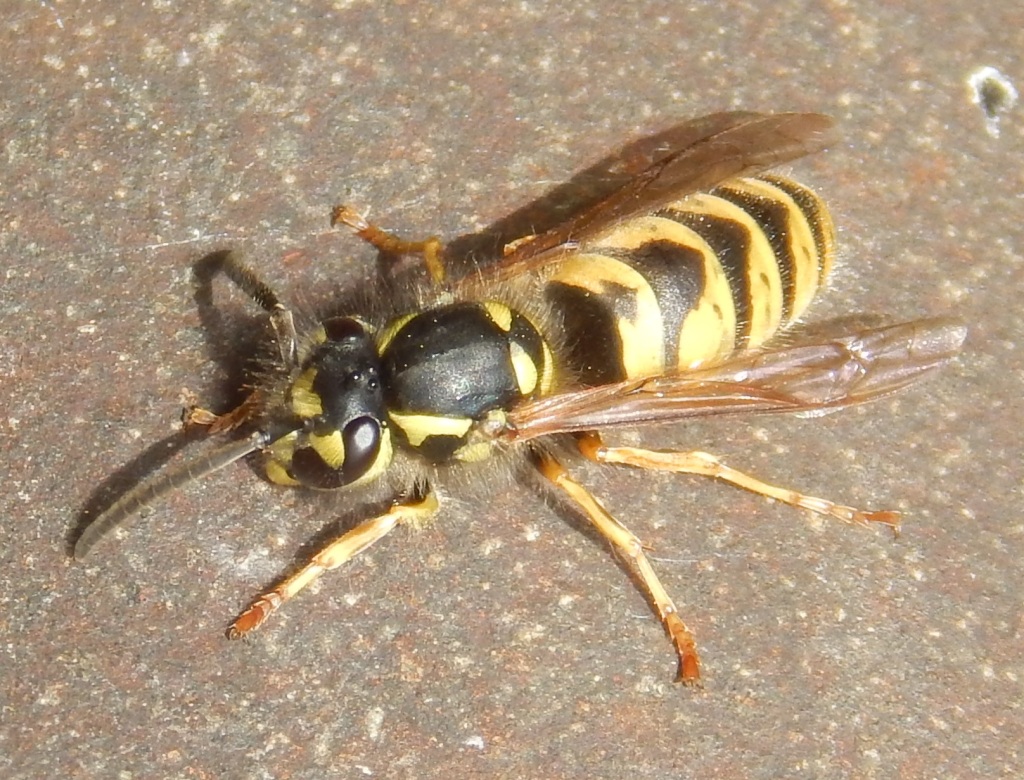
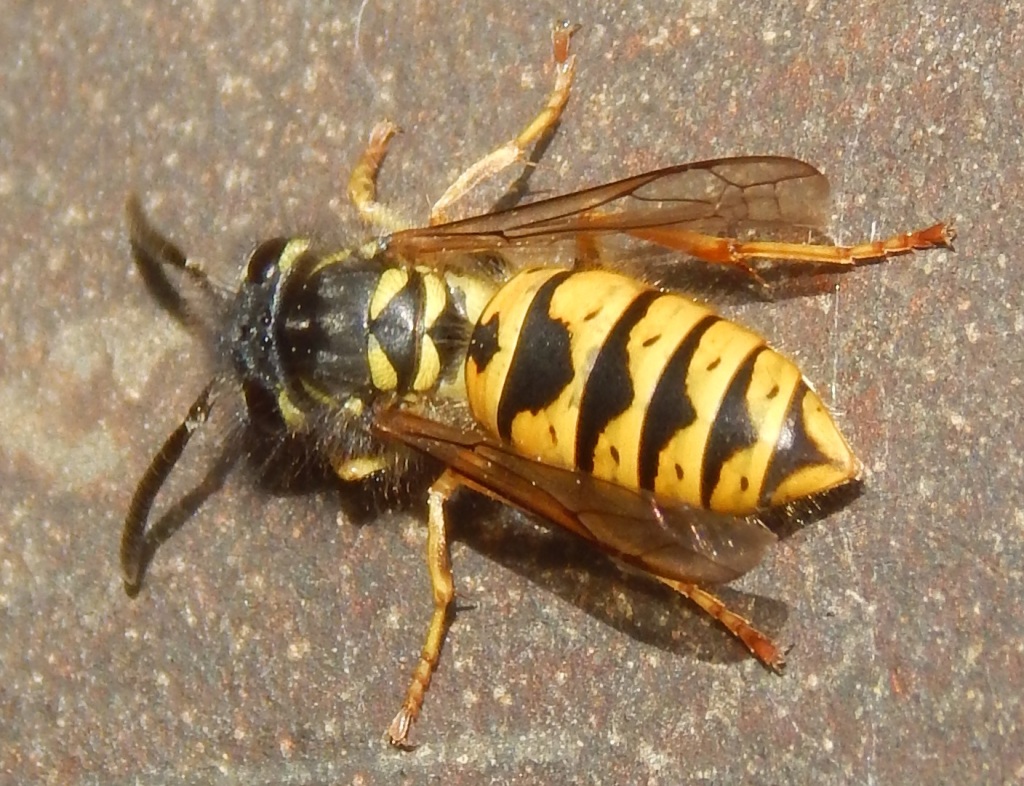
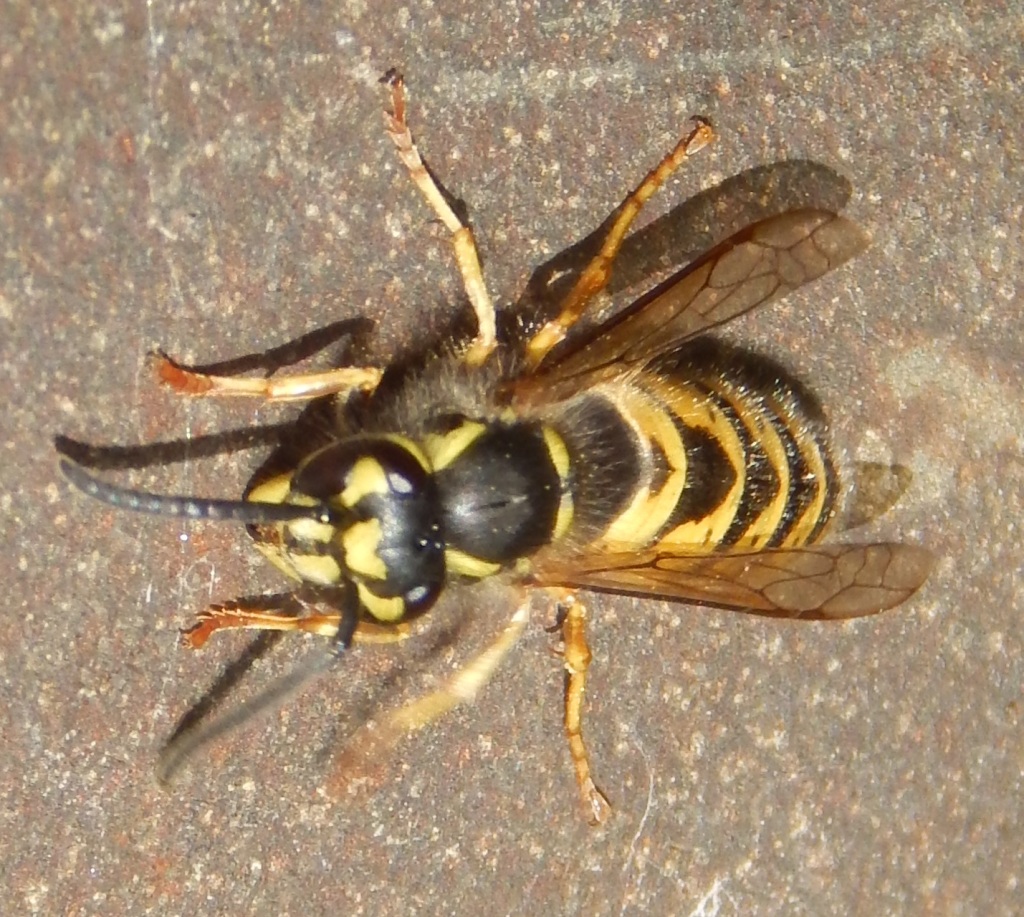
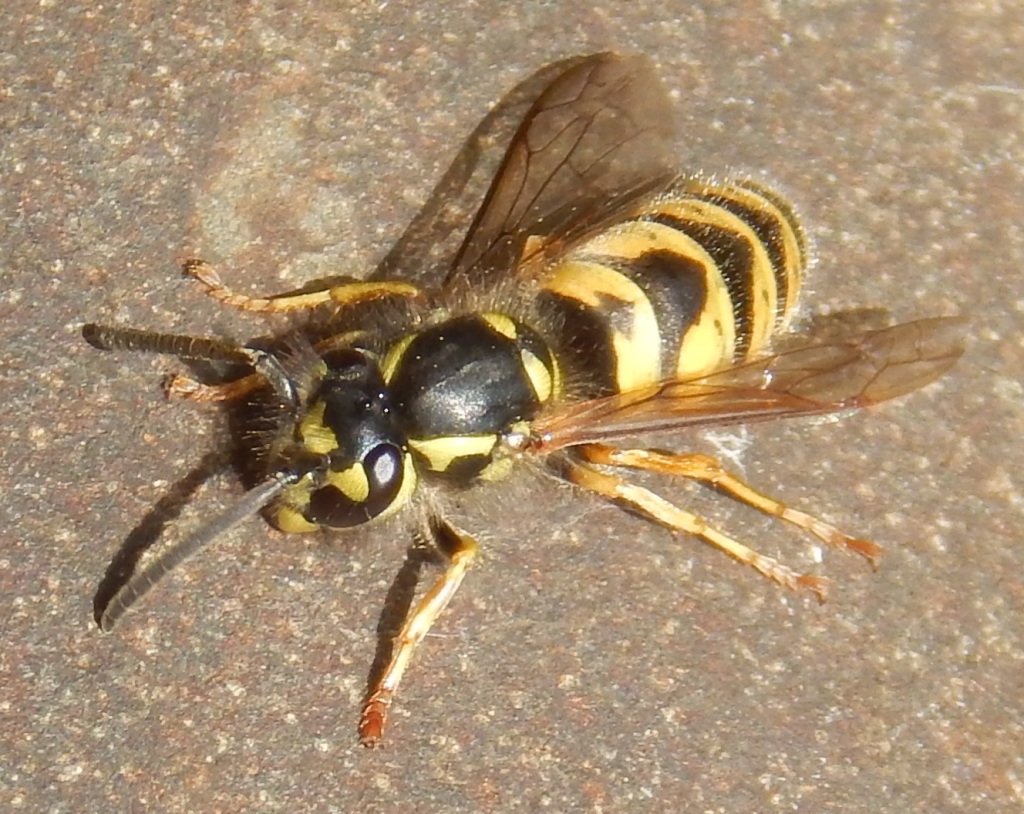
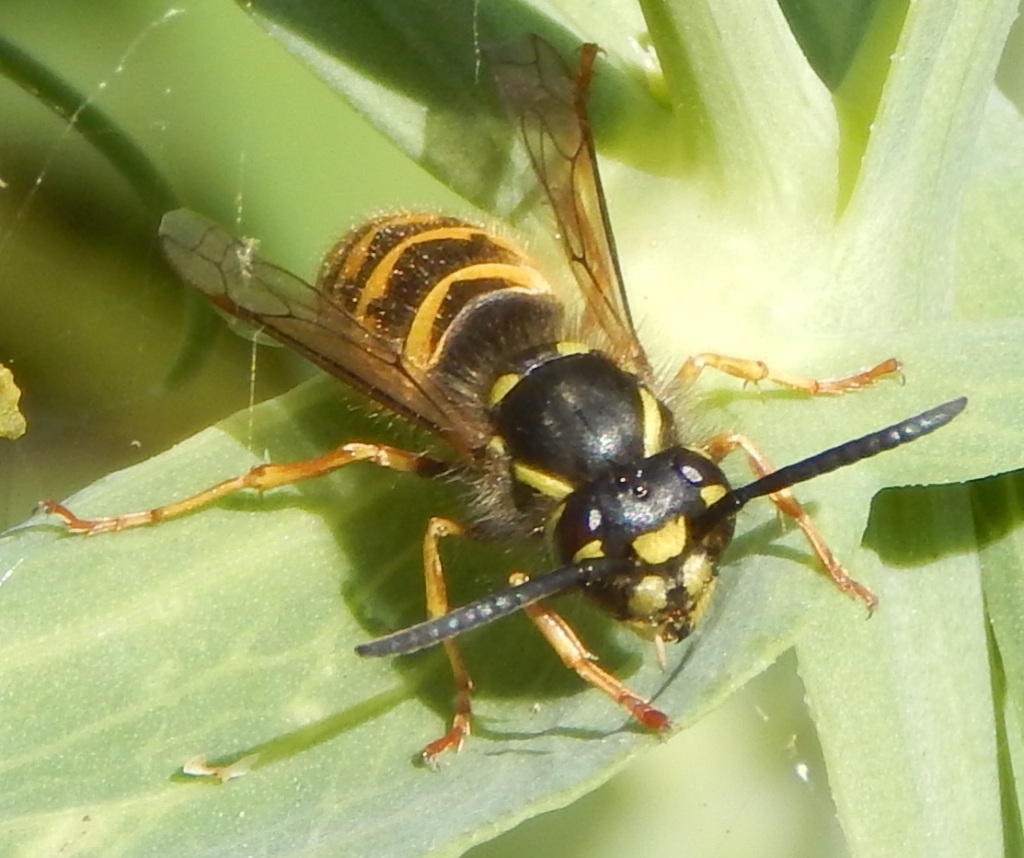
And Vespula vulgaris queens.
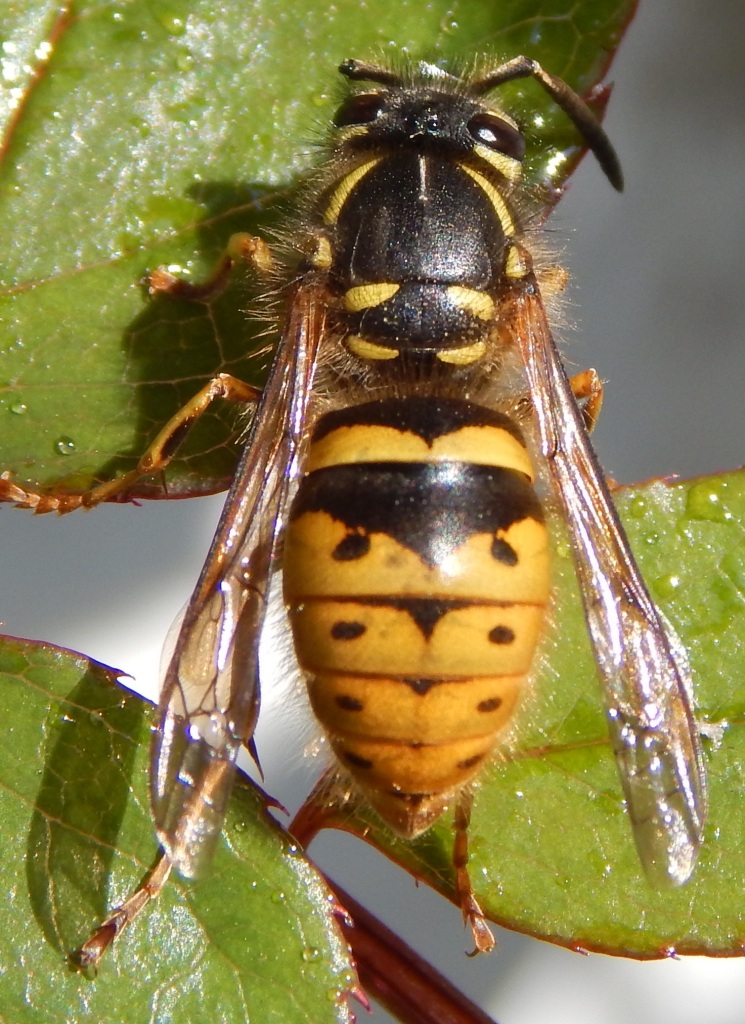

Some Vespula germanica.


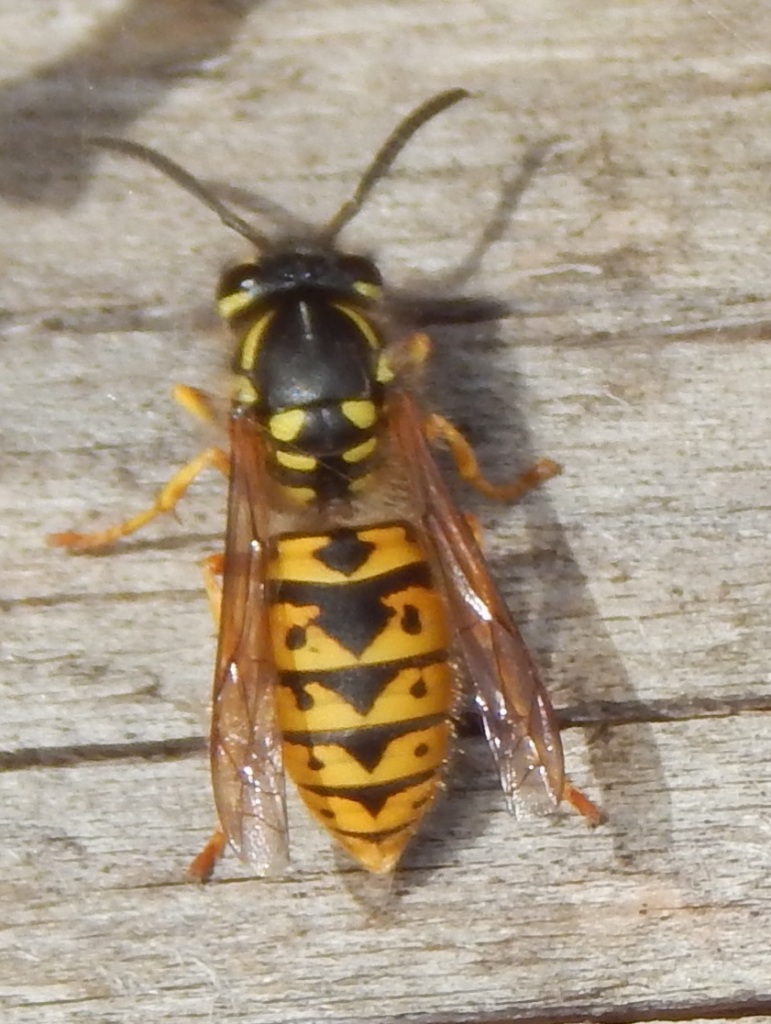
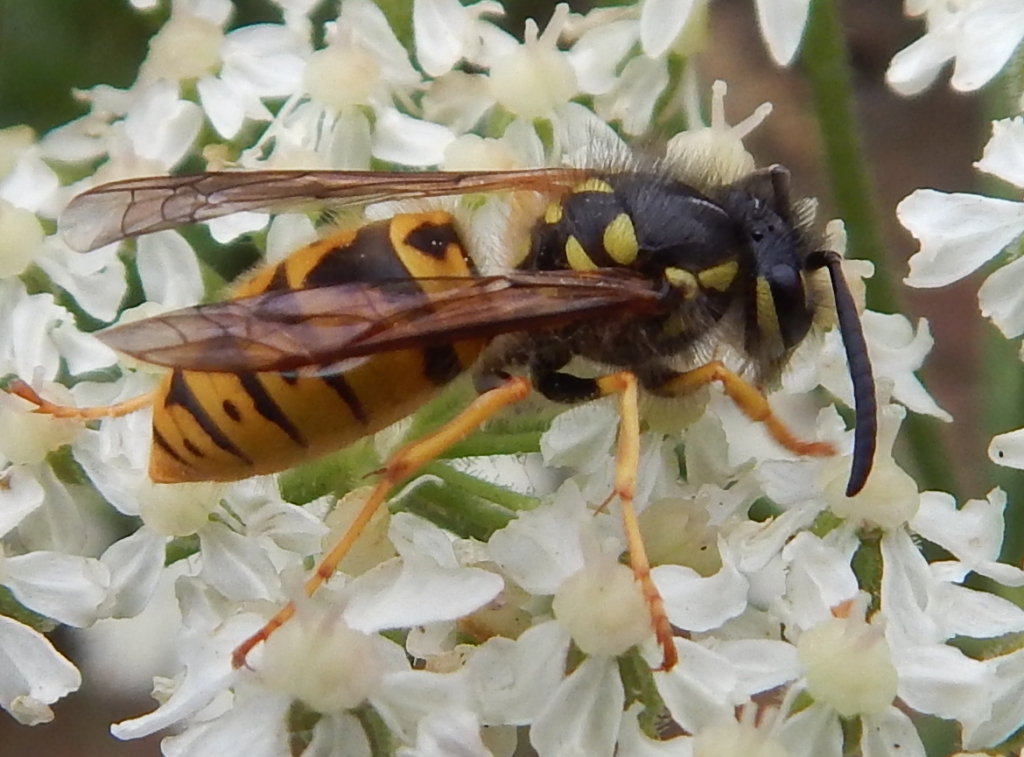
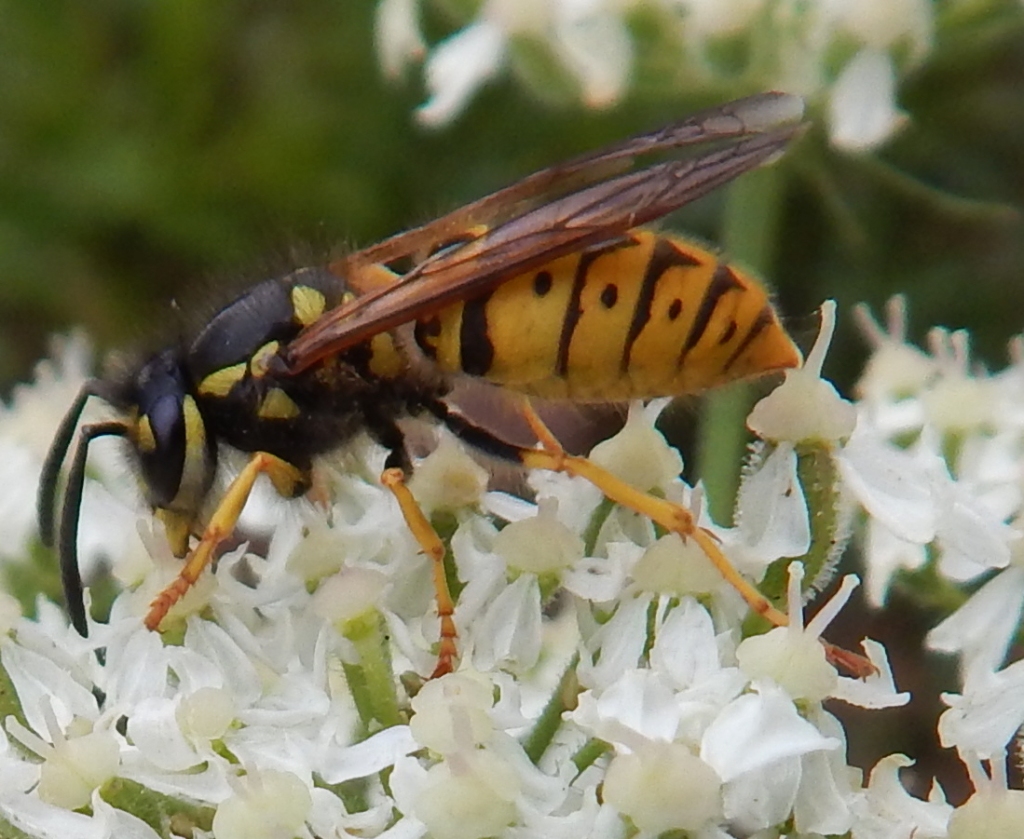

Habitat
Both Vespula vulgaris and Vespula germanica are found over most of Eurasia apart from the extreme south of Asia. They can live in most habitats provided they are not too cold. Both are common and widespread in the UK.
As well as the Common Wasp and the German Wasp, we also have Vespula rufa, the Red Wasp; Dolichovespula sylvestris, the Tree Wasp; and Dolichovespula norwegica, the Norwegian Wasp, all less common but found all over the UK. Dolichovespula media, the Median Wasp has been seen in Britain since about 1980 and is now seen over all England and Wales.
Other Notes
Wasps can sting but will only do so if annoyed or threatened. The sting is not barbed like a bee sting so wasps can sting repeatedly. Because the stinging mechanism is a development of the ovipositor, male wasps cannot sting.
See also
Hornets, Vespa crabro, can best be considered as wasps but a bit bigger. They are largely carnivorous. They are much rarer in the UK than wasps and are not normally found in Scotland, Ireland or the North of England.
